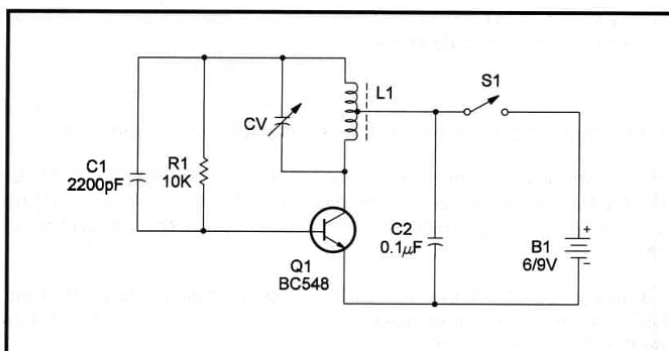
simulate this circuit – Schematic created using CircuitLab
Figure 1. V1 is 1 V, 100 kHz. V2 is 0.5 V, 102 kHz.

Figure 2. Note that V1 and V2 start and end in phase but are out of phase in the middle of the trace.
Does the frequency actually change?
Yes. The nearby metal changes the inductance of L1 and that changes the oscillator frequency.
I thought amplitude-modulated radio worked through changes in amplitude, not frequency.
It does, but this trick is interfering with the carrier wave to create some modulation on it. In Figure 1 V1 represents a radio station broadcasting on 100 kHz while V2 represents the metal detector "broadcasting" on 102 kHz. The AM radio's tuner isn't so selective that it could be tuned to ignore a very close frequency to that selected on the tuner dial. The result is that the receiver responds to the sum of the signals.
Figure 2 shows us that two close carrier signals will "beat" - periodically in phase and drifting to out-of-phase and back in-phase again. The result is an AM signal! You should be able to hear these once the difference between the two carrier frequencies is in the audible range. So, for a 100 kHz reference I would expect to be able to hear beats if the detector oscillates somewhere between 100,050 Hz to 105,000 Hz giving an audible beat tone of 50 Hz to 5 kHz.



